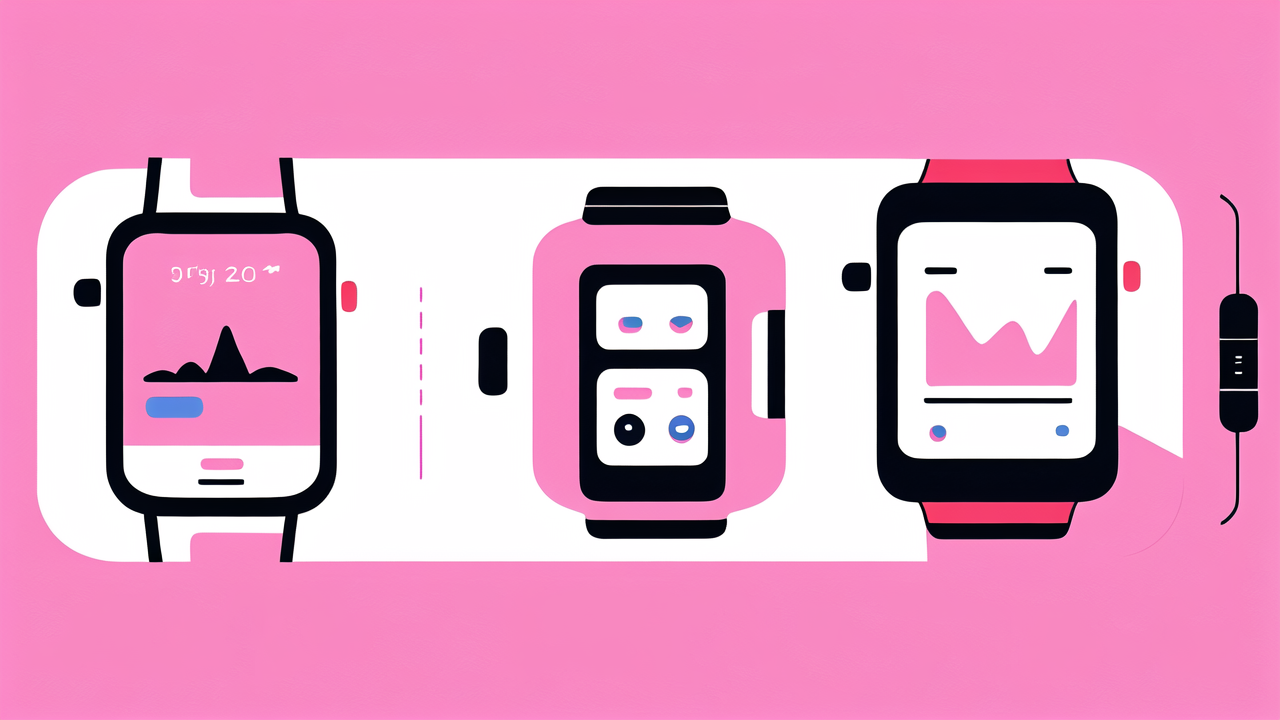Understanding the Differences: Smart Bands vs. Smart Watches
Exploring the Key Features of Smart Bands
Smart bands are compact wearable devices. They focus on fitness tracking and basic notifications. Most smart bands have a slim design and a small display. They usually offer features like step counting, heart rate monitoring, and sleep tracking. Smart bands are known for their long battery life, often lasting up to a week. They are lightweight and comfortable to wear during workouts. Many smart bands are water-resistant, making them suitable for swimming. Some advanced models can track specific activities like running or cycling. Smart bands are generally more affordable than smart watches. They appeal to users who want simple fitness tracking without extra features.

Analyzing the Key Features of Smart Watches
Smart watches are more versatile than smart bands. They offer a wider range of features and functionality. Smart watches have larger displays, often with touch screens. They can run various apps, similar to smartphones. Most smart watches allow users to make calls and send messages. They often include GPS for accurate location tracking. Many smart watches have built-in storage for music and podcasts. Some models offer contactless payments and voice assistants. Smart watches typically have more sensors for advanced health monitoring. They can track workouts, heart rate, and even ECG in some cases. However, smart watches usually have shorter battery life than smart bands. They are also bulkier and more expensive than their simpler counterparts.
Smart Band Applications in Various Industries
The Role of Smart Bands in Healthcare
Smart bands are becoming increasingly important in healthcare. They can continuously monitor vital signs like heart rate and blood oxygen levels. This data helps doctors track patients' health remotely. Smart bands can detect irregular heart rhythms and alert users to potential issues. They are useful for monitoring sleep patterns and quality. Some smart bands can track stress levels through heart rate variability. They can remind users to take medications or stay hydrated. In elderly care, smart bands can detect falls and send alerts to caregivers. They help patients manage chronic conditions like diabetes or hypertension. Smart bands contribute to preventive healthcare by encouraging regular exercise.
Smart Bands in Fitness and Wellness
Fitness enthusiasts widely use smart bands for tracking workouts. They count steps, measure distance traveled, and estimate calories burned. Many smart bands can automatically recognize different types of exercises. They provide real-time feedback on workout intensity and duration. Smart bands help users set and achieve fitness goals. They track progress over time and offer motivation through achievements. Some smart bands include guided breathing exercises for stress relief. They can monitor hydration levels and remind users to drink water. Smart bands often integrate with popular fitness apps for comprehensive tracking. They encourage users to maintain an active lifestyle through regular movement reminders.
The Future of Smart Bands in E-commerce
Smart bands are finding new applications in the e-commerce sector. They can be used for contactless payments, making shopping more convenient. Some smart bands integrate with loyalty programs for easy point collection. They can receive personalized shopping notifications based on location. Smart bands may offer secure authentication for online purchases. In warehouses, workers use smart bands to track inventory and manage tasks. These devices can help optimize delivery routes for couriers. Smart bands could enable virtual try-ons for clothing and accessories. They might provide haptic feedback for online shopping experiences. As technology advances, smart bands may revolutionize how we shop online and in-store.
Purchasing Considerations for Smart Bands and Smart Watches
Assessing Cost, Compatibility, and Connectivity
When choosing between a smart band and a smart watch, consider your budget. Smart bands are generally more affordable than smart watches. However, pricier models often offer more features. Check compatibility with your smartphone's operating system. Most devices work with both Android and iOS, but some have limitations. Consider the connectivity options available. Bluetooth is standard, but some devices also offer Wi-Fi or cellular. Look at the companion app's features and user reviews. A good app enhances the overall experience of using a wearable. Think about future compatibility with new smartphones or operating systems. Some brands offer better long-term support than others. Consider the cost of additional features like cellular connectivity. Factor in potential subscription fees for advanced health tracking services.
Evaluating User Experience and Lifestyle Needs
Think about how you plan to use the device in your daily life. If you mainly want fitness tracking, a smart band might be sufficient. For more features like messaging and apps, consider a smart watch. Consider the device's comfort and style for all-day wear. Smart bands are usually more comfortable for sleep tracking. Assess the importance of battery life for your lifestyle. Smart bands typically offer longer battery life than smart watches. Think about the activities you enjoy and choose a device that supports them. Water resistance is crucial if you swim or participate in water sports. Consider the display size and readability in various lighting conditions. Evaluate the ease of use, including button placement and touch responsiveness.
Navigating the Tech Specs: What to Look For
Pay attention to the display type and quality. OLED screens offer better contrast and power efficiency. Check the resolution and brightness for outdoor visibility. Look at the available sensors and their accuracy. Advanced health features may require specific sensors. Consider the storage capacity if you want to store music or apps. Evaluate the processor speed for smooth performance. Check the water resistance rating for your intended use. Look for durability features like scratch-resistant screens. Consider the charging method and time required for a full charge. Check for features like GPS, NFC, and cellular connectivity if needed. Evaluate the accuracy of fitness tracking and heart rate monitoring. Look for certifications from health organizations for medical-grade features.




Leave a comment
This site is protected by hCaptcha and the hCaptcha Privacy Policy and Terms of Service apply.